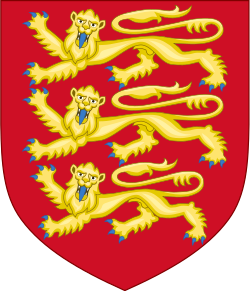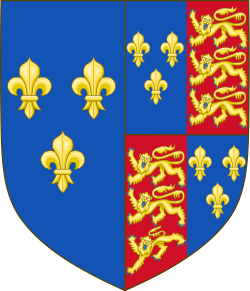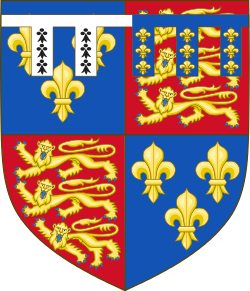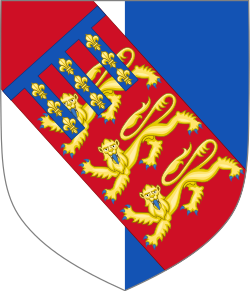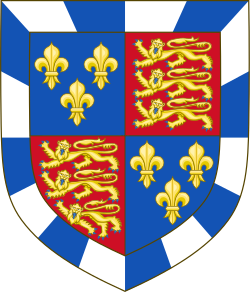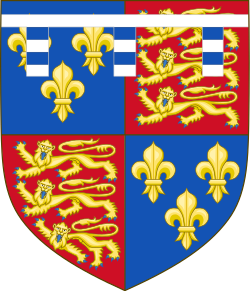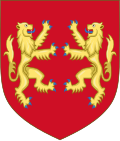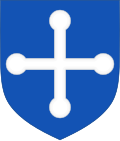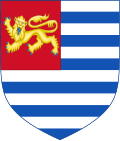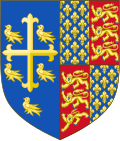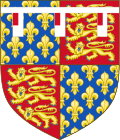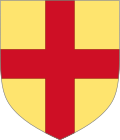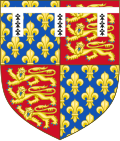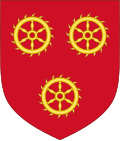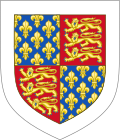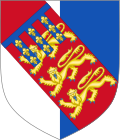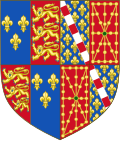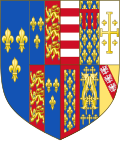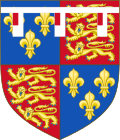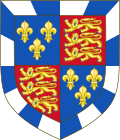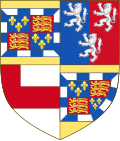
The House of Plantagenet was the first truly armigerous royal dynasty of England. Their predecessor, Henry I of England, had presented items decorated with a lion heraldic emblem to his son-in-law, Plantagenet founder Geoffrey, Count of Anjou, and his family experimented with different lion-bearing coats until these coalesced during the reign of his grandson, Richard I (1189–1199), into a coat of arms with three lions on a red field, formally Gules, three lions passant guardant or (armed and langued azure), that became the Royal Arms of England, and colloquially those of England itself. The various cadet branches descended from this family bore differenced versions of these arms, while later members of the House of Plantagenet would either quarter or impale these arms with others to reflect their political aspirations.
Contents
- Overview of Plantagenet arms
- Before Edward III
- After Edward III
- Non-Plantagenet families
- House of Plantagenet
- Descendants of Geoffrey Plantagenet, Count of Anjou
- Descendants of John, King of England
- Descendants of Henry III of England
- Descendants of Edward I of England
- Descendants of Edward II of England
- Descendants of Edward III of England
- House of Lancaster 2
- Descendants of John of Gaunt, 1st Duke of Lancaster
- House of York 2
- Descendants of Edmund of Langley, 1st Duke of York
- House of Beaufort
- Descendants of John Beaufort, 1st Earl of Somerset
- Descendants of Henry Beaufort, 3rd Duke of Somerset
- See also
- References



